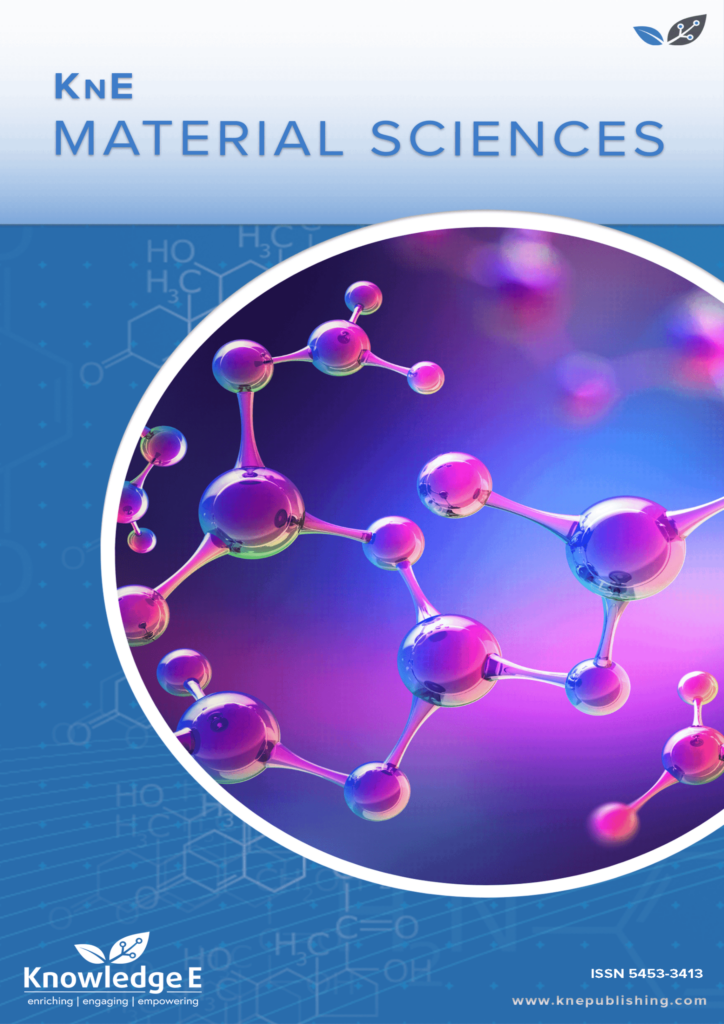
KnE Materials Science
ISSN: 2519-1438
The latest conference proceedings on physical materials, energy materials, electrical materials.
Influence of Hydraulic Conditions on Reclaimed Water Polishing Using Soil and Sand Columns
Published date: Aug 10 2022
Journal Title: KnE Materials Science
Issue title: 1st International FibEnTech Congress (FibEnTech21) – New Opportunities for Fibrous Materials in the Ecological Transition
Pages: 136–145
Authors:
Abstract:
The removal of residual pollutants from a synthetic effluent with a composition similar to that of urban effluent from secondary treatment was evaluated in vertical downflow columns. These were filled with soil, the fine fraction of the soil, and sand, and operated in discontinuous and continuous mode. The results showed high removal rates of organic matter, ammonium, nitrate and phosphate in the discontinuous and continuous experiments, especially for the fine fraction. Therefore, the soil is suitable for removing organic matter and nutrients (N-NH4, N-NO3, and P-PO4), and can be used for polishing wastewater before its infiltration.
Keywords: wastewater reuse, organics removal, nutrient removal, residual soil, river sand
References:
[1] UNESCO WWAP (World Water Assessment Programme). The United Nations world water development report 2020: Water and climate change, executive summary. Perugia, Italy: UNESCO; 2020. Available from: https://unesdoc.unesco.org/ark:/48223/pf0000372882
[2] do Monte MH, Albuquerque A. Reutilização de águas residuais: Guia Técnico no. 14. Lisboa: Entidade Reguladora dos Serviços de Águas e Resíduos (ERSAR); 2010.
[3] Lazarova V, Asano T, Bahri A, Anderson J, editors. Milestones in water reuse - The best success stories. London: IWA Publishing; 2013.
[4] Sharma SK, Kennedy MD. Soil aquifer treatment for wastewater treatment and reuse. International Biodeterioration & Biodegradation. 2017;119:671–677. https://doi.org/10.1016/j.ibiod.2016.09.013
[5] Dillon P, Stuyfzand P, Grischek T et al. Sixty years of global progress in managed aquifer recharge. Hydrogeology Journal. 2019;27:1–30. https://doi.org/10.1007/s10040-018-1841-z
[6] Silva F. Avaliação da capacidade reativa de solos residuais destinados à infiltração de águas residuais tratadas [PhD thesis in Civil Engineering]. Covilhã, Portugal: Universidade da Beira Interior; 2015.
[7] Silva F, Scalize P, Cruvinel K, Albuquerque A. Caracterização de solos residuais para infiltração de efluente de estação de tratamento de esgoto. Engenharia Sanitária e Ambiental. 2017;22(1):95-102. https://doi.org/10.1590/S1413-41522016141677
[8] Fael C. Erosões localizadas junto de encontros de pontes e respetivas medidas de proteção [PhD thesis in Civil Engineering]. Covilhã, Portugal: Universidade da Beira Interior; 2007.
[9] Especificação LNEC E 239. Solos. Análise granulométrica por peneiração húmida. Lisboa: Laboratório Nacional de Engenharia Civil; 1970.
[10] Especificação LNEC E 196. Solos. Análise granulométrica. Lisboa: Laboratório Nacional de Engenharia Civil; 1966.
[11] Norma Portuguesa definitiva NP 83. Solos. Determinação da densidade das partículas. Lisboa: Inspeção Geral dos Produtos Agrícolas e Industriais (IGPAI) – Repartição de Normalização; 1965.
[12] Nelson D. W, Sommers L. E. Total carbon, organic carbon and organic matter. In: D. L. Sparks, A. L. Page, P. A. Helmke, R. H. Loeppert, P.N. Soltanpour, M.A. Tabatabai, C.T. Johnston, M.E. Sumner (Eds.). Methods of soil analysis: Part 3. Chemical methods. Madison, Wisconsin, USA: Soil Science Society of America, Inc., American Society of Agronomy, Inc.. 1996;961– 1010.
[13] Van Reeuwijk L. Procedures for soil analysis. 6th ed. ISRIC, FAO, Wageningen; 2002.
[14] Albuquerque A. Contribuição para o estudo da remoção de residuais de carbono em filtros fiológicos de leito imerso e fluxo descendente [PhD thesis in Civil Engineering]. Covilhã, Portugal: Universidade da Beira Interior; 2003.
[15] Amado L. Sistemas de tratamento de águas residuais por zonas húmidas artificiais em Portugal Continental [MSc thesis]. Coimbra, Portugal: Universidade de Coimbra; 2007.
[16] Opoku B. Suitability of different reactive filter media for onsite wastewater [MSc thesis]. Suécia: KTH Royal Institute of Technology, Estocolmo; 2007.
[17] Eliasson J. Rule development commitee issue research report-draft: Hidraulic loading. Washington, DC: Washington State Department of Health; 2002.
[18] Jellali S, Sediri T, Kallali H, Anane M, Jedidi N. Analysis of hydraulic conditions and HRT on the basis of experiments and simulations on soil column. Desalination. 2009;246(1-3):435-443. https://doi.org/10.1016/j.desal.2008.03.065
[19] Pavelic P, Dillon P, Mucha M, Nakai T, Barry K, Bestland E. Laboratory assessment of factors affecting soil clogging of soil aquifer treatment systems. Water Research. 2011;45(10):3153-3163. https://doi.org/10.1016/j.watres.2011.03.027
[20] APHA-AWWA-WEF. Standard methods for the examination of water and wastewater. 20th ed. Washington, DC: American Public Health Association, American Water Works Association, Water Environmental Federation; 2005.
[21] Kallali H, Anane M, Jellali S, Tarhouni J. GIS-Based multi-criteria analysis for potencial wastewater aquifer recharge sites. Desalination. 2007;215:111-119. https://doi.org/10.1016/j.desal.2006.11.016
[22] Silva I. Desenvolvimento de agregados artificiais por ativação alcalina de lamas residuais para utilização no tratamento de águas residuais [PhD thesis in Civil Engineering]. Covilhã, Portugal: Universidade da Beira Interior; 2013.
[23] Tchobanoglous G, Burton F, Stensel H. Wastewater engineering: Treatment and reuse. 4th ed. Nova Iorque: McGraw-Hill; 2003.
[24] Grady Jr W, Daigger G, Lim H. Biological wastewater treatment. 2nd ed. Basel: Marcel Decker; 1999.
[25] Paredes D, Kuschk P, Mbwette T, Stange F, Mueller R, Koeser H. New aspects of microbial nitrogen transformations in the context of wastewater treatment - A review. Engineering in Life Sciences. 2007;7(1):13-25. https://doi.org/10.1002/elsc.200620170
[26] Asano T, Burton F, Leverenz H, Tsuchihashi RE, Tchobanoglous G. Water reuse: Issues, technologies and applications. New York: McGraw-Hill; 2007.
[27] Costa J. Caracterização e constituição do solo. 8th ed. Lisboa: Fundação Calouste Gulbenkian; 2011.
[28] Ruan H, Gilkes R. Kinetics of phosphate sorption and desorption by synthetic aluminous goethite before and after thermal transformation to hematite. Clay Minerals. 1996;31(1):63-74. https://doi.org/10.1180/claymin.1996.031.1.06